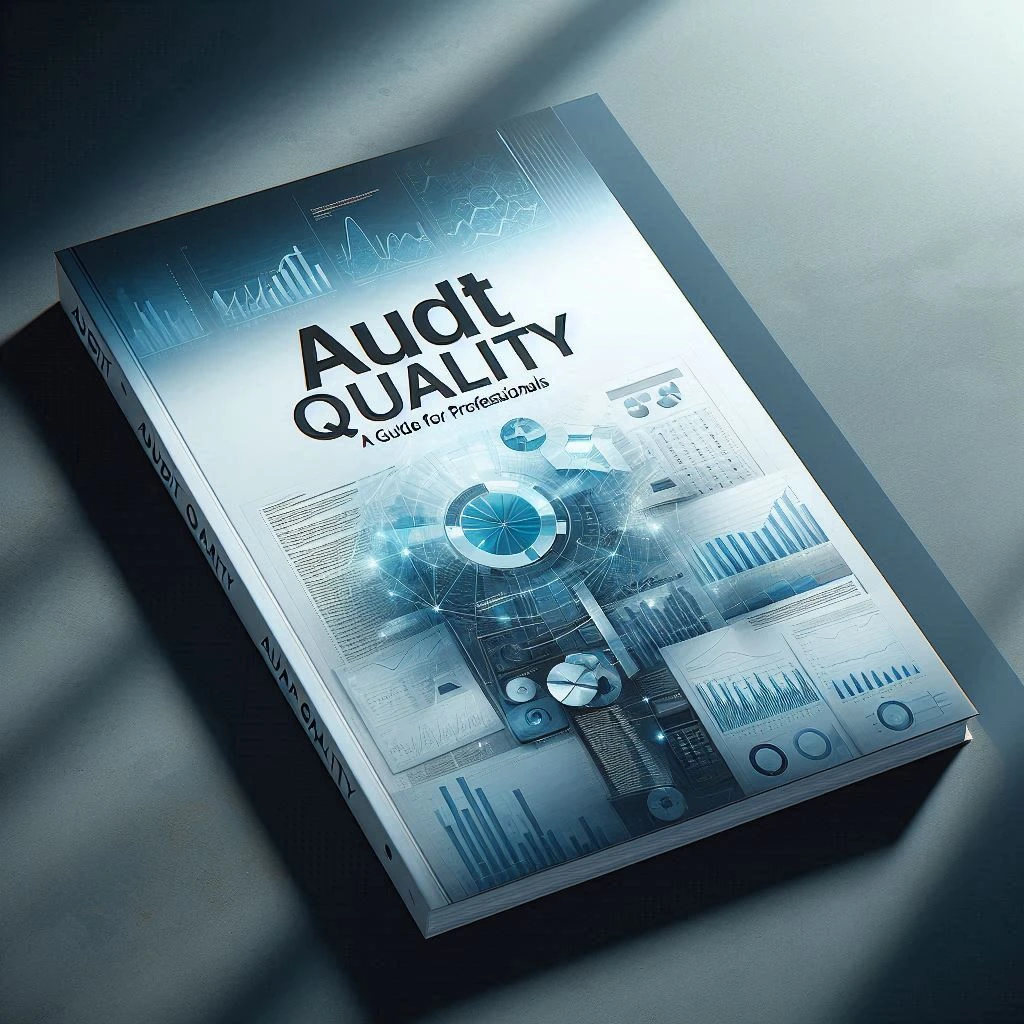In the realm of internal audit, the significance of quality assurance reviews (QARs) cannot be overstated. These reviews serve as a critical mechanism for evaluating and enhancing the effectiveness of the internal audit function. A quality assurance review is a systematic assessment of an internal audit department’s performance, focusing on adherence to established standards and best practices. This process is essential for ensuring that audits are conducted with integrity, objectivity, and professionalism, ultimately leading to improved organizational governance and risk management.
The primary role of quality assurance reviews is to provide an independent evaluation of the internal audit activities, identifying strengths and areas for improvement. By conducting these reviews, organizations can ensure that their audit processes are not only compliant with regulatory requirements but also aligned with the strategic objectives of the organization. This alignment is crucial, as it helps audit teams optimize their resource allocation and focus on areas that have the highest impact on the organization’s goals [3].
The purpose of this blog is to delve into the metrics and key performance indicators (KPIs) that can be utilized to evaluate the effectiveness of quality assurance reviews. By understanding and implementing these metrics, internal audit leaders and stakeholders can better assess the impact of QARs on audit quality, ensuring that their audit functions continuously evolve and improve. This exploration will provide valuable insights into how organizations can measure the success of their quality assurance initiatives and enhance the overall effectiveness of their internal audit processes.
Understanding Quality Assurance Reviews
Quality Assurance Reviews (QARs) play a crucial role in enhancing the effectiveness and credibility of internal audit functions. They serve as a systematic evaluation of the internal audit activity, ensuring that it meets established standards and delivers value to the organization. Here, we will explore the objectives, processes, and guiding standards of quality assurance reviews in internal audit.
Objectives of Quality Assurance Reviews
The primary objectives of quality assurance reviews in internal audit include:
- Enhancing Audit Quality: QARs aim to assess and improve the quality of audit work, ensuring that audits are conducted in accordance with professional standards and organizational policies. This includes evaluating the adequacy of audit coverage and the quality of work performed by auditors [3][4].
- Compliance with Standards: These reviews help ensure compliance with relevant standards, such as the International Internal Audit Standards set by the Institute of Internal Auditors (IIA). This compliance is essential for maintaining the integrity and reliability of the internal audit function [5].
- Identifying Improvement Areas: QARs provide insights into areas where the internal audit function can improve, whether through enhanced methodologies, better training for auditors, or more effective communication with stakeholders [4][10].
- Stakeholder Assurance: By demonstrating adherence to quality standards, QARs help build trust with stakeholders, including senior management and the board, regarding the effectiveness of the internal audit function [6][12].
Process of Conducting a Quality Assurance Review
The process of conducting a quality assurance review typically involves several key steps:
- Planning: The review begins with planning, where the scope, objectives, and methodology are defined. This includes determining whether the review will focus on specific audits or the overall audit function [3].
- Data Collection: Reviewers gather relevant data, which may include audit reports, working papers, and feedback from stakeholders. This data is essential for assessing the quality of the audit work performed [9].
- Evaluation: The collected data is evaluated against established criteria, such as the IIA’s International Standards. Reviewers assess the effectiveness of audit processes, the adequacy of documentation, and the overall impact of audits on organizational objectives [5].
- Reporting: After evaluation, a report is generated that outlines findings, strengths, weaknesses, and recommendations for improvement. This report is shared with relevant stakeholders to facilitate discussions on enhancing audit quality [4].
- Follow-Up: Finally, a follow-up process is established to ensure that recommendations are implemented and that the internal audit function continues to evolve and improve over time [10].
Standards and Frameworks Guiding Quality Assurance
Quality assurance reviews in internal audit are guided by several key standards and frameworks, including:
- IIA’s International Standards: The IIA provides a comprehensive set of standards that outline the requirements for conducting internal audits and quality assurance reviews. These standards emphasize the importance of independence, objectivity, and professional competence in audit activities [6].
- Quality Assurance and Improvement Program (QAIP): According to the IIA, every internal audit activity must develop and maintain a QAIP that includes both internal and external assessments. This program is essential for ensuring continuous improvement and adherence to quality standards [5].
- Peer Review Models: Many organizations adopt peer review models, where auditors review each other’s work against predefined checklists or questionnaires. This approach fosters collaboration and knowledge sharing among audit teams while ensuring that quality standards are met [1][2].
Quality assurance reviews are vital for measuring and enhancing the effectiveness of internal audit functions. By understanding their objectives, processes, and the standards that guide them, internal audit leaders and stakeholders can better appreciate the impact of these reviews on overall audit quality.
The Importance of Measuring Impact
Measuring the impact of quality assurance reviews in internal audit is crucial for several reasons, particularly for internal audit leaders and stakeholders who aim to enhance audit quality and effectiveness. Here are the key points to consider:
- Continuous Improvement in Audit Practices: Measuring the impact of quality assurance reviews is fundamental to fostering a culture of continuous improvement within audit practices. By evaluating the effectiveness of these reviews, organizations can identify areas for enhancement, implement best practices, and refine their methodologies. This ongoing assessment ensures that audit processes remain relevant and effective in addressing emerging risks and challenges in the business environment.
- Risks of Not Measuring Effectiveness: Failing to measure the effectiveness of quality assurance reviews can lead to significant risks. Without proper metrics and evaluations, organizations may overlook deficiencies in their audit processes, resulting in subpar audit quality. This oversight can compromise the reliability of audit findings, diminish stakeholder trust, and potentially expose the organization to compliance issues or financial misstatements. Moreover, a lack of measurement can hinder the ability to demonstrate the value of the internal audit function to stakeholders, which is essential for securing ongoing support and resources.
- Linking Measurement to Organizational Goals: The measurement of impact from quality assurance reviews should be closely aligned with organizational goals and stakeholder expectations. By establishing key performance indicators (KPIs) that reflect both audit quality and organizational objectives, internal audit leaders can ensure that their reviews contribute to the broader strategic aims of the organization. This alignment not only enhances the relevance of the audit function but also reinforces the importance of quality assurance reviews in achieving stakeholder satisfaction and organizational success.
Measuring the impact of quality assurance reviews is not merely a procedural formality; it is a strategic necessity that drives continuous improvement, mitigates risks, and aligns audit practices with organizational goals. By prioritizing this measurement, internal audit leaders can enhance the overall effectiveness and credibility of their audit functions.
Key Metrics for Evaluating Quality Assurance Reviews
Quality assurance reviews (QARs) play a crucial role in enhancing the effectiveness and credibility of internal audit functions. To measure the impact of these reviews on audit quality, it is essential to utilize a combination of quantitative and qualitative metrics. Below are key metrics that internal audit leaders and stakeholders can employ to evaluate the effectiveness of quality assurance reviews.
Quantitative Metrics
- Number of Audits Reviewed: This metric tracks the total number of audits that have undergone quality assurance reviews within a specific timeframe. A higher number indicates a more robust review process, which can lead to improved audit quality and compliance with standards [1].
- Audit Completion Times: Measuring the time taken to complete audits can provide insights into the efficiency of the audit process. Shorter completion times, while maintaining quality, suggest that the internal audit function is operating effectively. Conversely, prolonged completion times may indicate bottlenecks or inefficiencies that need addressing [4].
- Percentage of Audit Plan Completed: This metric assesses the extent to which the planned audits have been completed. A high percentage reflects effective planning and execution, while a low percentage may signal issues in resource allocation or prioritization.
Qualitative Metrics
- Auditor Satisfaction: Conducting surveys to gauge auditor satisfaction with the quality assurance review process can provide valuable insights. High satisfaction levels often correlate with a supportive audit environment, which can enhance overall audit quality [7].
- Stakeholder Feedback: Gathering feedback from stakeholders, including management and the board, can help assess the perceived value of the internal audit function. Positive feedback indicates that the audit activities align with organizational goals and stakeholder expectations, while negative feedback can highlight areas for improvement [3].
Benchmarking Against Industry Standards
Benchmarking is a powerful tool for evaluating the effectiveness of quality assurance reviews. By comparing internal audit metrics against industry standards or peer organizations, audit leaders can identify performance gaps and areas for enhancement. This process involves:
- Identifying Key Performance Indicators (KPIs): Establishing KPIs that are relevant to the organization’s context and industry standards can help in measuring performance effectively [5].
- Comparative Analysis: Analyzing how the internal audit function measures up against peers can provide insights into best practices and areas for improvement. This can include metrics such as audit cycle times, completion rates, and stakeholder satisfaction levels [6].
Employing a mix of quantitative and qualitative metrics, along with benchmarking against industry standards, can significantly enhance the evaluation of quality assurance reviews in internal audit. By focusing on these key metrics, internal audit leaders can ensure that their quality assurance processes contribute positively to audit quality and organizational effectiveness.
Key Performance Indicators (KPIs) for Internal Audit Quality
In the realm of internal auditing, quality assurance reviews play a crucial role in ensuring that audit processes meet established standards and contribute to the overall effectiveness of the audit function. To measure the impact of these reviews, it is essential to define and utilize Key Performance Indicators (KPIs) that can provide insights into audit quality. Below are some relevant KPIs, methods for establishing baseline performance, and the importance of aligning these metrics with strategic objectives.
Relevant KPIs for Internal Audit Quality
Percentage of Audits Meeting Quality Standards: This KPI measures the proportion of audits that comply with predefined quality criteria. A higher percentage indicates a robust quality assurance process.
Error Rates in Audit Findings: This metric tracks the frequency of errors identified in audit reports. A lower error rate suggests a higher quality of audit work and effective quality assurance reviews.
Timeliness of Audit Completion: This KPI assesses whether audits are completed within the scheduled timeframe. Timely audits reflect efficient processes and adherence to quality standards.
Stakeholder Satisfaction Scores: Gathering feedback from stakeholders regarding the audit process and outcomes can provide qualitative insights into the perceived quality of audits.
Corrective Action Closure Rate: This measures the effectiveness of follow-up actions taken in response to audit findings. A high closure rate indicates that issues are being addressed promptly and effectively.
Training Completion Rates for Audit Staff: This KPI evaluates the percentage of audit staff who have completed required training programs. Continuous education is vital for maintaining high-quality audit standards.
Establishing Baseline Performance for Each KPI
To effectively measure the impact of quality assurance reviews, it is crucial to establish baseline performance for each KPI. This can be achieved through the following steps:
- Historical Data Analysis: Review past audit performance data to identify trends and establish a baseline. For instance, analyze previous audit reports to determine the average percentage of audits meeting quality standards.
- Benchmarking: Compare your internal audit function’s performance against industry standards or best practices. This can help set realistic and achievable baseline targets.
- Stakeholder Input: Engage with stakeholders to gather insights on their expectations and perceptions of audit quality. This feedback can inform the establishment of baseline performance metrics.
- Pilot Testing: Implement a pilot phase for new KPIs to assess their relevance and effectiveness before full-scale adoption. This allows for adjustments based on initial findings.
Importance of Aligning KPIs with Strategic Objectives
Aligning KPIs with the strategic objectives of the internal audit function is essential for several reasons:
- Relevance: KPIs that reflect the strategic goals of the organization ensure that the audit function is focused on areas that matter most to stakeholders and the overall business strategy.
- Accountability: When KPIs are aligned with strategic objectives, it fosters a culture of accountability within the audit team, as they can see how their work contributes to broader organizational goals.
- Continuous Improvement: Aligning KPIs with strategic objectives encourages ongoing evaluation and refinement of audit processes, leading to continuous improvement in audit quality.
- Stakeholder Engagement: Demonstrating how KPIs support strategic objectives can enhance stakeholder confidence in the internal audit function, reinforcing its value to the organization.
Defining and utilizing relevant KPIs is vital for measuring the effectiveness of quality assurance reviews in internal audits. By establishing baseline performance and aligning these metrics with strategic objectives, internal audit leaders can enhance audit quality and demonstrate the value of their function to stakeholders.
Challenges in Measuring Quality Assurance Review Impact
Measuring the impact of Quality Assurance (QA) reviews on audit quality is essential for internal audit leaders and stakeholders. However, several challenges can hinder the effective implementation of metrics and Key Performance Indicators (KPIs) in this area. Understanding these challenges and developing strategies to address them is crucial for fostering a culture of measurement and accountability within the internal audit function.
Common Challenges
Data Availability and Quality: One of the primary obstacles in measuring the impact of QA reviews is the availability and accuracy of data. Internal auditors often face difficulties in accessing reliable data that is necessary for effective audits. This can lead to challenges in evaluating the outcomes of QA reviews and their influence on overall audit quality [14].
Resistance to Change: Implementing new metrics and KPIs can encounter resistance from team members who may be accustomed to traditional methods of evaluation. This resistance can stem from a lack of understanding of the benefits of measurement or fear of increased scrutiny. Overcoming this mindset is essential for successful implementation [10].
Resource Constraints: Internal audit functions may face limitations in terms of resources, including time, personnel, and technology. These constraints can impede the ability to collect, analyze, and report on the necessary data for measuring QA review impacts effectively.
Strategies to Overcome Challenges
- Fostering a Culture of Improvement: To address resistance to change, it is vital to cultivate a culture that values continuous improvement and accountability. Engaging employees in discussions about the benefits of measurement can help alleviate fears and encourage buy-in for new processes [4].
- Investing in Technology: Utilizing advanced data analytics tools can enhance the availability and quality of data. By investing in technology that streamlines data collection and analysis, internal audit functions can improve their ability to measure the effectiveness of QA reviews [10].
- Training and Development: Providing training for internal audit staff on the importance of metrics and KPIs can help build a shared understanding of their value. This can also equip team members with the skills needed to effectively implement and utilize these measures.
Importance of a Cultural Shift
Emphasizing the need for a cultural shift towards measurement and accountability is critical for the success of QA reviews. By fostering an environment where data-driven decision-making is prioritized, internal audit leaders can enhance the effectiveness of their QA processes. This shift not only improves audit quality but also reinforces stakeholder confidence in the internal audit function [11].
While challenges exist in measuring the impact of Quality Assurance reviews, proactive strategies and a commitment to cultural change can significantly enhance the effectiveness of internal audit activities. By addressing these challenges head-on, internal audit leaders can ensure that their QA reviews contribute meaningfully to the overall quality of audits conducted.
Conclusion and Call to Action
In the realm of internal audit, the significance of Quality Assurance Reviews (QARs) cannot be overstated. These reviews serve as essential tools for assessing the effectiveness of audit procedures, ensuring that they provide accurate and relevant information to decision-makers and stakeholders. By implementing a structured QAR process, organizations can benchmark their internal audit functions against best practices, ultimately enhancing the quality of their audits and fostering greater trust in their findings [1][5].
Metrics and Key Performance Indicators (KPIs) play a crucial role in measuring the impact of these reviews. They allow internal audit leaders to quantify the effectiveness of their audit functions through various dimensions, such as the percentage of the audit plan completed, the number of issues identified, and the rate of recommendations implemented on time [3][11]. By tracking these metrics over time, organizations can identify trends, assess improvements, and make informed decisions that drive continuous enhancement of their audit processes [12].
As we conclude this discussion, we encourage internal audit leaders and stakeholders to adopt and implement the metrics and KPIs outlined in this blog. By doing so, they can not only measure the effectiveness of their Quality Assurance Reviews but also foster a culture of accountability and improvement within their audit teams.
We invite our readers to share their experiences and suggestions regarding the measurement of QAR impact. Your insights can contribute to a broader understanding of best practices in quality assurance and help shape the future of internal audit excellence. Together, let’s strive for a more effective and impactful internal audit function that meets the evolving needs of our organizations.
Find out more about Shaun Stoltz https://www.shaunstoltz.com/about/
This post was written by an AI and reviewed/edited by a human.



